The wind, water, islands: Exploring Stockholm’s archipelago
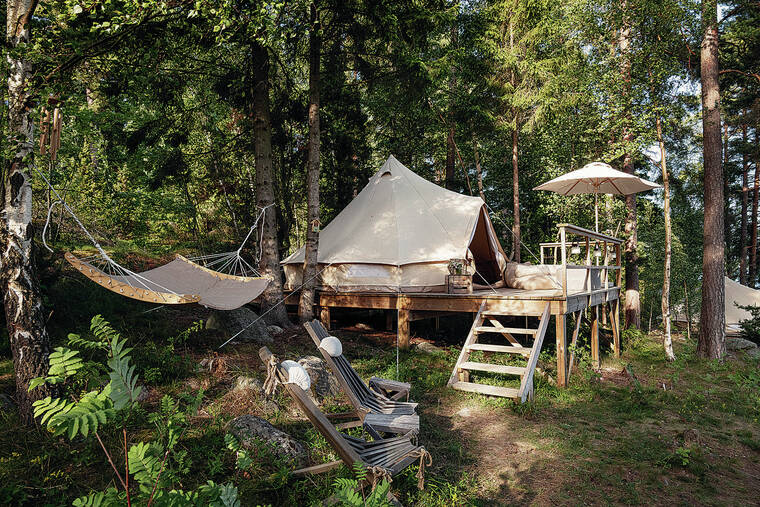
NEW YORK TIMES
A glamping site on Svartsö, one of the 24,000-island archipelago in the Baltic Sea near Stockholm that has long been the quintessential summer destination for Swedes.
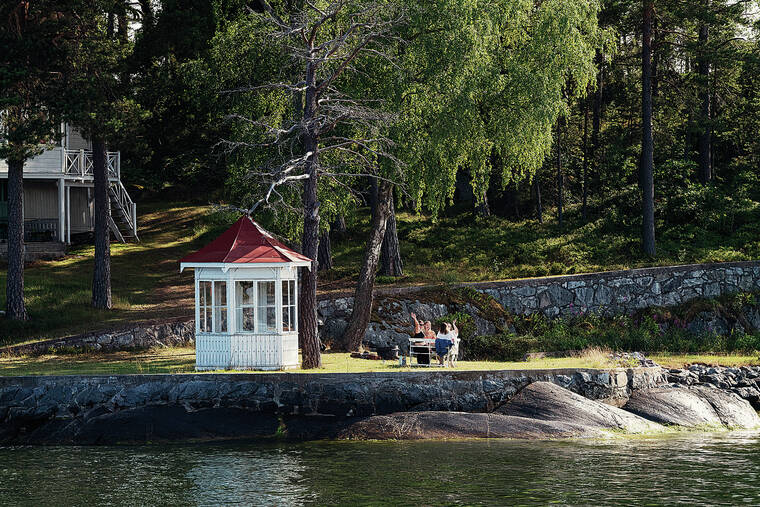
NEW YORK TIMES
A gazebo on Svartsö, one of the 24,000-island archipelago in the Baltic Sea near Stockholm that has long been the quintessential summer destination for Swedes.
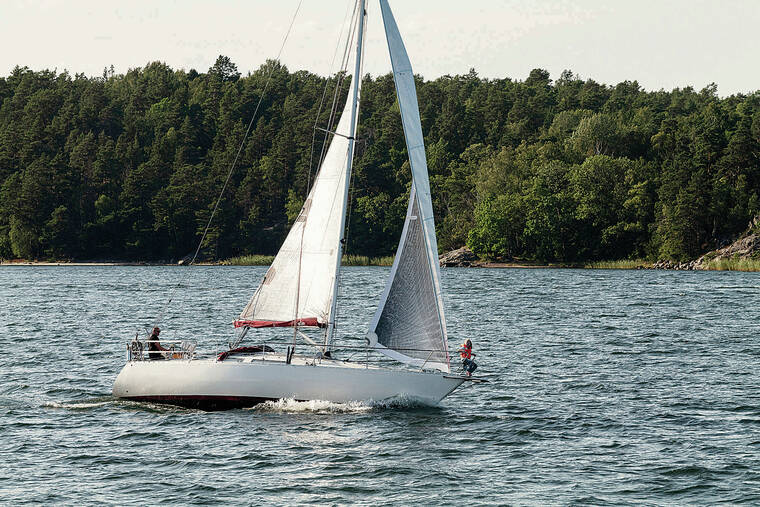
NEW YORK TIMES
A sailboat plies the waters off Svartsö, one of the 24,000-island archipelago in the Baltic Sea near Stockholm that has long been the quintessential summer destination for Swedes.
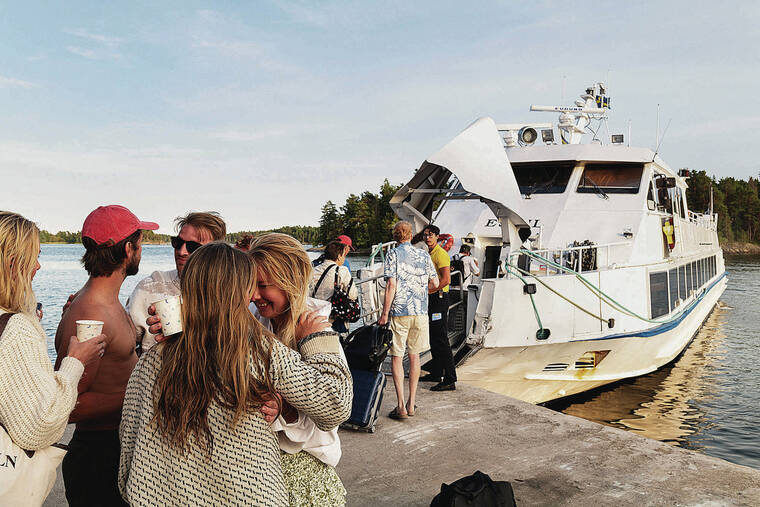
NEW YORK TIMES
A ferry loads and unloads people on Svartsö, one of the 24,000-island archipelago in the Baltic Sea near Stockholm that has long been the quintessential summer destination for Swedes.
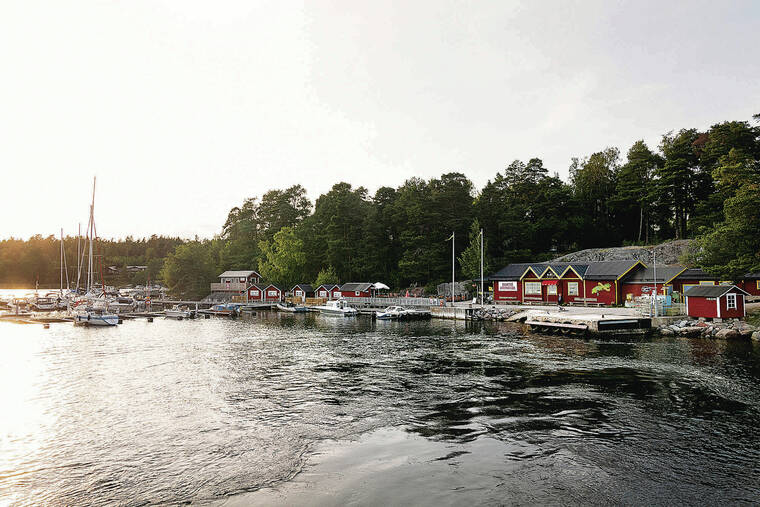
NEW YORK TIMES
Docks on Svartsö, one of the 24,000-island archipelago in the Baltic Sea near Stockholm that has long been the quintessential summer destination for Swedes.





The moment the motor turned off, I was hooked.
It was 20 minutes into my first Swedish sailing trip on a blazingly sunny morning in late June. I’d set sail with two friends from their summer house on Kilholmen, a wooded islet in the central archipelago, about an hour by bus (then a five-minute boat ride) from Stockholm. After motoring through a narrow waterway, past smooth, rounded cliffs backed by pine forests and the occasional red timbered cottage, we entered a wide-open bay, steered the bow into the wind and raised the sails. When the puttering motor was cut, it was suddenly quiet, just the wind in my face and the sparkling archipelago all around.
The sheer magnitude of Stockholm’s archipelago is astounding. Shaped like a fan spreading out from the capital into the Baltic Sea, this watery region spans over 650 square miles — more than twice the area of New York City’s five boroughs — with somewhere between 24,000 and 30,000 islands and islets.
“The innermost islands are quite big and populated,” said Jeppe Wikstrom, a photographer and book publisher who has lived and worked in the archipelago for decades. “The farther out you go, the smaller the islands get, the lower they get. And in the outermost archipelago, there are only low slabs of rock.”
In Swedish, there’s a specific term for each archipelago landmass, from the large islands covered with pine trees and stately 19th-century summer houses to tiny islets with nothing but a few shrubs and lichen.
“I could probably give you 30 different words for an island and most of us would know what the island looks like because of that name,” Wikstrom said. “Skar, kobbe, haru, o — it’s like the Inuits and snow.”
Don't miss out on what's happening!
Stay in touch with breaking news, as it happens, conveniently in your email inbox. It's FREE!
For Swedes, the archipelago is a quintessential summer destination that has often served as the backdrop for movies and television shows, from Ingmar Bergman’s film “Summer with Monika” to Astrid Lindgren’s children’s series “Vi pa Saltkrakan” (“Seacrow Island”). But few foreign visitors find their way to these idyllic isles.
“It’s a cliche, the hidden gem, but those are 24,000 hidden gems,” Wikstrom said. “It’s jewelry stores of hidden gems.”
Many of those natural treasures are accessible by ferry, bus or car. But the vast majority can be reached only by motorboat or sailboat, which one can rent with or without a skipper.
For me, the decision whether to travel by engine or sail was easy.
“This is probably the most extraordinary place for sailing in the world,” Wikstrom said. “The variety of the landscape, the right to public access, the lack of strong winds and tidal currents makes it wonderful.”
It’s also an eco-conscious choice, relying solely on the wind for power.
“You are one with nature when you go sailing,” said Patrik Salen, the commodore of the Royal Swedish Yacht Club, a 193-year-old organization based in the archipelago. “It’s the wind, it’s the water and it’s your boat.”
Or it’s your friend’s boat.
Sailing upwind
My friendship with Viola Gad, a journalist for Sveriges Radio, began several years ago at a creative coworking space in Stockholm. In June, she and her husband, Henke Evrell, invited me aboard their sailboat: a 33-foot Smaragd, a lithe Swedish racing boat designed in 1973 and constructed in Sweden through the mid-1990s. The boat has been aptly described as “built for energetic sailors.” Their rambunctious 2-year-old, John, was also along for the adventure.
The goal for our first day on the water was to push as far out into the archipelago as possible, sailing upwind in the direction of Biskopson, a nature reserve in the outer islands. Zigzagging back and forth across a wide bay, Henke was in constant motion, adjusting a pulley, letting out a rope, tightening a sail and consulting the sea chart to ensure the route was clear of underwater rocks — an ever-present danger in the archipelago. A seasoned sailor with years of racing experience, he confidently steered Bird — the same name Dickie Greenleaf (Jude Law’s character) christened his boat in the movie “The Talented Mr. Ripley” — to overtake larger sailboats with ease.
Meanwhile, with John sleeping in the bow, Viola peeled tiny Baltic shrimp for a snack piled on Swedish crispbread with mayonnaise and dollops of salty roe. Passing a modern glass-walled mansion on its own tiny island, we traded guesses as to which startup founder was the likely owner.
It was late afternoon when we finally moored in a natural harbor on the islet of Tistronskar, where Viola leaped onto a barren cliff, to pull in the boat, which was then tied to metal hooks hammered into cracks in the rock face. Once ashore, the whole sweaty crew decided to take a dip in the refreshingly chilly sea, wading through sea grass and slippery moss-covered stones to reach the cool, clear depths beyond.
Dinner was a bit of a fiasco — I broke a bottle of pinot noir on the rocks, someone else smashed a glass, John rolled a head of lettuce into the water — but afterward, sitting on the smooth, sun-warmed cliff we watched a chestnut-colored mink dive into the sea as an Arctic tern gracefully circled overhead. The nearest island was wooded, with a small house and a dock visible through the pines, but in the distance, the horizon was interrupted only by low humps of rock.
“See, the sea and sky blurred,” Henke said after the sun set at 10 p.m., dusk erasing any distinction between the two.
Taking the ferry
I’d long thought of sailing as something only other people did — wealthy people, to be honest — but in Sweden, that’s not necessarily the case. Allemansratten, the Swedish right to public access, means that everyone has the right to roam — and moor — on any land or island, no matter who owns it.
“It’s very egalitarian,” Henke said. “Anyone can come to an island like this if you have a boat. And you don’t have to have a big boat. It’s even better if you have a small boat because the smaller the boat you have, the better access you have.”
“It’s like you have this island for the night, and it’s just yours,” Viola added.
That said, not everyone has a friend with whom to sail or the means (or desire) to rent a boat to experience the archipelago. But alternatives exist.
“If you’re not an experienced sailor, I would recommend starting on one of those wonderful archipelago ferries,” Wikstrom told me earlier. “And it’s possible to do even if you’re in a wheelchair, so it makes the archipelago really accessible.”
Let the wind decide
With so many islands, so many things to do and see, the hard part is often deciding. And on a sailboat, we could go anywhere.
“It’s like the feeling of getting on the highway,” said Viola, as we sipped tea at twilight, discussing where we might sail the next morning. “Your sails are up and the opportunities are endless.”
When it was time to start heading back to Stockholm with Viola and Henke, we let the wind dictate our course and wound up stopping for lunch and ice cream on Kymmendo, a small island that served as inspiration for the novel “Hemsoborna,” by celebrated Swedish author August Strindberg. Then we set sail for home.
This time, with the wind at our back, Henke unfurled a royal-blue spinnaker, a lightweight three-cornered sail perfect for the present wind conditions. While Viola and John napped below, he instructed me where to steer and nimbly hoisted the spinnaker and adjusted the ropes and when the wind caught the sail — what a thrill! — it filled like a giant parachute flying through the archipelago.
Just as I had been awed by the passing nature while standing on the stern of a ferry chugging slowly toward Svartso, I was again enraptured by the ever-changing scene: a sea gull sitting on an islet that was nothing more than a small rock, a narrow bay framed by sloping cliffs, a rocky peninsula covered with tiny yellow flowers, a small red cottage on an island all its own.
“It’s not just where you’re going, it’s the journey there,” Henke said.
It’s also the journey back, I thought, as we made our way through this stunning archipelago.
© 2023 The New York Times Company



